29 Compton Bassett – middle cottage


In a war that killed over 18 million people with another 23 million wounded, four may seem an insignificant number. 100 years is also a long passage of time and the events that took place are now unsupported by living memory. Yet we continue to remember because these lives that were sacrificed leave a history that is still relevant to us, whether war is considered futile or just.
This is a personal tribute to four men who lived in, or were connected to, the village of Compton Bassett and were killed during the 1914-18 war; their story reminds us that it was not just a European war. Each name is inscribed on the modest yet dignified war memorial in the village, which was created in 1950. The archive of First World War army records is patchy, some 60% are lost forever but it has been possible to piece together a dimension of their lives and the events that led up to each tragic conclusion.

Major Frederic George Greenstreet
105th Mahratta Light Infantry, British Indian Army
Born 7 March 1881
Died 9 January 1917 aged 35
Family lived at the Rectory, Compton Bassett
Frederic George Greenstreet was born on 7 March 1881 in London, the third son of Colonel William Lees Greenstreet and Matilda Christina Frederica Kent. At that time the family lived in London but as William Lees was a career officer with the Royal Engineers and stationed in India, his wife often joined him for periods at a time. Several of their seven children were born in the Punjab region of India. Later, when Colonel Greenstreet retired in the 1890s, they moved back to England and lived in Berkshire and Devon. Frederic’s mother Matilda died in 1911 and subsequently his father moved in with second son Lawrence William who had become the new rector of Compton Bassett in 1915; Rev. Lawrence Greenstreet remained vicar from 1915-37. As well as having many generations of sons who entered the church, the Greenstreet family were steeped in a long tradition of military service and to India in particular. Frederic’s great grandfather, John Greenstreet, arrived in Bengal as a cadet in 1797 and a long career culminated with promotion to General in 1854.


Frederic attended school at Dover College in Kent and at the age of 18, he followed his eldest brother Charles Basil Lees Greenstreet to pursue a career in the army. After officer training at Sandhurst, he received his first commission with West Surrey Regiment as a 2nd Lieutenant on 11th August 1900 and went to India in December the same year. On 3rd April 1903, Frederic was promoted to Lieutenant and joined the 103rd Mahratta Light Infantry of the British Indian Army. He was promoted to Captain on 11 August 1909. Being in England on leave at the outbreak of the war, he was ordered to join the New Army and become adjutant of a battalion of the Gloucestershire Regiment, with which he went to France in August 1915. He was promoted to Major on 1st September 1915 and ordered to return to India in March 1916. Now as Second in Command of the 2nd battalion 105th Mahratta Light Infantry, Frederic was sent on to Mesopotamia to protect British interests there later that year; his brother Charles, who was to survive the war, had been stationed there since 1915.
Mesopotamia (modern-day Iraq) became an increasingly important place in the First World War as Britain sought to protect its supply of oil for the navy. In 1908 the first oil had been struck by the Anglo-Persian Oil Company and in 1913 Winston Churchill negotiated a deal on behalf of the Admiralty to modernise the navy by abandoning its use of coal in favour of oil. This supply was now under threat from Turkey, who claimed Mesopotamia as part of the Ottoman Empire; meanwhile Germany, although an ally of Turkey, had ambitions of their own in the region. Britain saw an opportunity to defeat Turkey, thereby weakening Germany’s European campaign, and maintaining their sphere of influence in protecting the frontier of India.
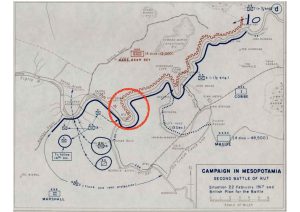
British forces sent to the region were principally from the Indian Army and so it was that Frederic was assigned there along with large numbers of reinforcements later in 1916. Overall, some 700,000 Indian troops took part in the Mesopotamia campaign and they faced a formidable opponent in Turkey. Early in 1917 Frederic became involved in an offensive to retake Kut-al-Amara, a strategically important town on the Tigris river, 100 miles south-east of Baghdad. Turkish forces had inflicted a humiliating defeat on the British there in April 1916 and now, under the new command of General Maude, British forces launched an offensive at Khadairi Bend, where the Tigris river turns sharply eastwards just north of Kut; it was an area that was heavily fortified by the Turks. After an artillery bombardment on Turkish defences, an infantry assault commenced on the morning of 9th January 1917, becoming known as the Battle of Khadairi Bend (or Battle of Mohammed Abdul Hassan). It was extremely hard-fought, in awful conditions resulting from previous torrential rain and the day itself was shrouded in mist.
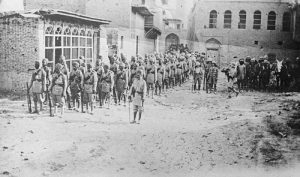
Despite early gains, Turkish forces counter-attacked and intense hand-to-hand fighting ensued but British and Commonwealth forces ultimately prevailed and took the Turkish position. Casualties were around 700, including Frederic who was killed in a frontal assault of the first Turkish trench whilst leading D Company of the 105th Mahratta Light Infantry. Aged 35, half of his life had been with the British Indian Army and serving abroad; the war casualty list even records his nationality as Indian. His name is recorded on Panel 48 at the Basra War Memorial in Iraq.
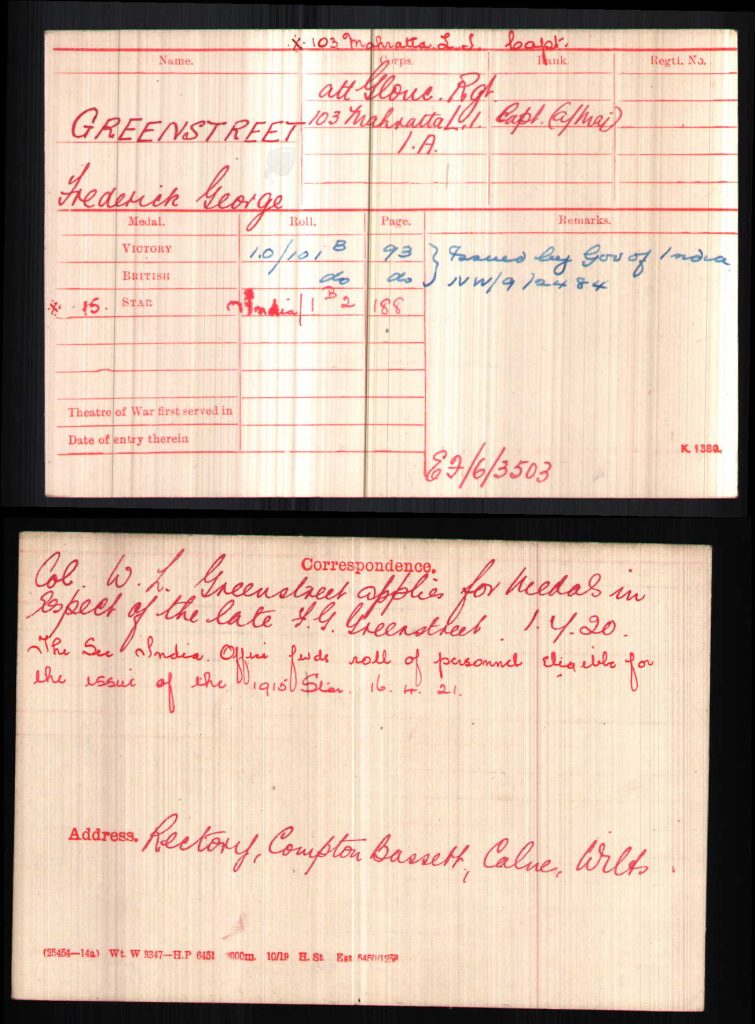
Frederic Greenstreet’s Medal Index Card

Basra Memorial commemoration
Frederic was awarded the 1915 Star for service in India, together with the Victory Medal and British War Medal, the standard issue for active service in his case. His father and brother Laurence only moved to Compton Bassett in 1915 and so it is possible that Frederic spent little or no time in Compton Bassett. In 1920 his father applied for Frederic’s medals to be sent to him, a small comfort for the family’s sacrifice.

Corporal Walter Reginald Powell 15041
8th Battalion Gloucestershire Regiment
Born 5 February 1892
Died 6 September 1918 aged 26
Family lived at 29 & 33 Compton Bassett
Born in Compton Bassett on 5th February 1892 to parents George Daniel Powell and Mary Jane Ferris, Walter Reginald spent his early childhood living at 33 Compton Bassett before the family moved to Lower Lodge near Cherhill by 1901. In 1911 nineteen year old Walter was lodging in Devizes and working as a shop assistant selling furniture. Meanwhile his parents had moved back to Compton Bassett, a little further up the street at No 29 where George was employed as a house painter for the estate.


33 Compton Bassett – left hand cottage
Walter volunteered for service with 12th Service Battalion, Gloucestershire Regiment and landed in France on 21st November 1915; a month later his brigade became attached to 5th Division. Walter was promoted to Corporal and his records indicate that he was later transferred to 8th Battalion Gloucestershire Regiment. Transfers could occur after a soldier was injured and, following recuperation, may not have been able to rejoin his unit and was sent elsewhere; equally he may have been transferred on promotion and attached to another, more depleted unit. So, by 1918 Walter’s 8th Battalion was part of 57th Brigade in 19th Western Division and fighting on the Western Front in the Advance in Flanders, otherwise known as the Fifth Battle of Ypres. This was a critical juncture of the war with increasing successes against German forces who were fast becoming battle weary and exhausted. On 6th September 1918, just two months before war ended and after three hard years of combat, Walter was shot by a sniper while on patrol near the village of Locon, north east of Béthune in an area not far from the Belgian border.

Still living at 29 Compton Bassett, his mother Mary received a letter dated 12th September 1918 from Walter’s platoon officer,
“He was very popular with the men; he was a fine soldier and a man whom I greatly admired. He will be greatly missed by all the platoon, and as a non commissioned officer his place will be hard to fill. Our heartfelt sympathy goes out to you in your sad bereavement, and I trust you will find comfort in the thought that he died serving his country.”
 His name is recorded at the Loos Memorial near Lens in France on panel 61, which commemorates the 20,638 identified British and Commonwealth soldiers who have no known grave but were killed in an area between the river Lys and Grenay, a distance of just 10 miles.
His name is recorded at the Loos Memorial near Lens in France on panel 61, which commemorates the 20,638 identified British and Commonwealth soldiers who have no known grave but were killed in an area between the river Lys and Grenay, a distance of just 10 miles.
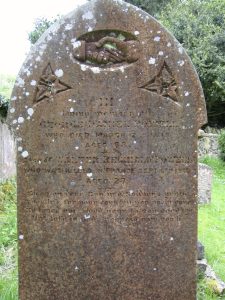
Mary had been widowed earlier in the year when husband George died on 12 March 1918 and sadly was then to lose her only son six months later.
An elegant headstone in St Swithin’s Churchyard, Compton Bassett commemorates both husband George and her son Walter. Below their names is a special dedication to Walter which reads:
Sleep on dear son in a soldier’s grave
Your life for your country you nobly gave
No loved one stood near to say goodbye
But safe in God’s keeping now you lie
Private William John Cook 22197
5th Battalion Wiltshire Regiment
Born July 1896
Died 29 March 1917 aged 20
Family lived at Alley Cottage, 59 Compton Bassett

Born in Roundway, Devizes, William John was the eldest son of William and Mary Jane’s nine children (three died in infancy). The two boys and their four surviving sisters lived in Mildenhall near Marlborough before moving to Alley Cottage, 59 Compton Bassett (now Austin’s Farm) in the early 1900s. In 1911, at the age of 14, William worked on the farm as a labourer, where his father was also employed as a carter.
He joined the new 5th Battalion Wiltshire Regiment that had been recently formed in Devizes, on 29th March 1915 and sailed from Avonmouth for Gallipoli on 1 July 1915, landing at Cape Helles on 17th July. His battalion experienced heavy losses in a Turkish attack on 10th August; to make matters worse they also suffered from disease, fierce summer heat and lack of supplies and water. Exhausted, demoralised and with most officers killed including their commanding officer General Baldwin. The very few survivors were moved to Lala Baba and eventually evacuated from Gallipoli in January 1916 and taken to Egypt. In February 1916 they moved again, this time to Mesopotamia where the battalion remained until the end of the war, attached to 40th Brigade and part of the 13th (Western) Division.
Joining 38th Brigade, the 5th Wiltshires crossed the River Diyala by 6am on 10th March 1917, a few miles east of Baghdad. The following day they became the first to enter the city of Baghdad, where they were cheered by the inhabitants.
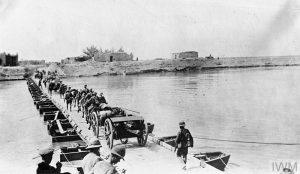
After this the 5th Battalion withdrew, moving eastward and according to their war diary, did not then engage the mostly retreating enemy forces meaningfully until the 29th March. After locating the Turkish position, they set out at 2.30am north along the old Nahrawan Canal and assembled two miles south of the new Turkish front line. From there they advanced under shell fire to a deep ravine, a position which afforded only slight cover and now just over a mile from the enemy. At 9am they pushed forward and attacked the Turkish position until they were held up 1300 yds away. Despite the absence of good cover 5th Battalion accomplished the attack successfully but under heavy artillery, machine gun and rifle fire, sustaining appalling casualties with one in five men killed or wounded. It is likely in this action that William was injured and later died of his wounds.
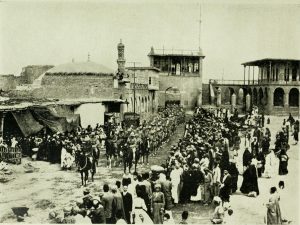
A plaque at the Basra Memorial, near Zubayr in Iraq, commemorates him and the regiment he served. William was one of 40,682 members of Commonwealth forces who died in Mesopotamia between autumn 1914 and the end of August 1921 and whose graves are not known; over 80% were Indian. Because of the site’s sensitivity, the memorial was moved in its entirety by Iraqi authorities in 1997, a considerable undertaking.


Private Reginald Thomas Raisey Cook 45033
1st Battalion Royal Inniskilling Fusiliers
Born 13 October 1899
Died 14/15 October 1918 aged 19
Family lived at 59 Compton Bassett
Records show that Reginald Thomas Raisey Cook, known as ‘Tom’, was born on 13th October 1899 in Manningford Abbots near Pewsey, Wiltshire. He was the younger brother by three years of William John, whom he followed into the army, presumably during 1918 as conscripts were not allowed to be sent overseas until the age of 19. In the early years of the Great War this rule was often bypassed as volunteers lied about their age or gave false names and some 250,000 underage soldiers have been estimated to have fought. Even so, by 1918 the British Army was depleted in numbers and a new law passed in April of that year allowed men of 18 years and 6 months to be despatched abroad as long as they had received 6 months initial training. However, the introduction of conscription in 1916 had made it much more difficult to falsify one’s name or age and recruit numbers continued to decline. It is possible therefore, that Tom was only in active service on the Western Front just weeks before being killed in action.
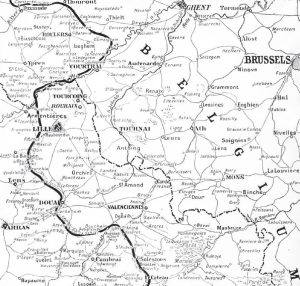
Enlistment after 1916 changed the army’s training structure and conscripts no longer had a choice of regiment, being simply allotted to any regiment that needed men. This is almost certainly why Tom ended up with an Irish regiment instead of a local one, as his elder brother William had done when electing to join the Wiltshire Regiment. Tom’s 1st Battalion had transferred to 109th Brigade, 36th (Ulster) Division in February 1918 and in October, during the remaining weeks of the war was involved in the Battle of Courtrai (now Kortrijk), Belgium, a city east of Ypres which had been in German hands for most of the war. An offensive started in the early hours of 14 October and by evening British forces had moved through Gulleghem and captured Moorslede to the north-west of Courtrai. The next day 1st Battalion took Heule, a village just north of the city as part of a fast-moving and highly successful onslaught. Yet it was possibly here that Tom, two days after his 19th birthday, was killed in action along with 25 others from 1st Battalion in two days of intensive fighting. The battle for Courtrai was over in five days with the German army now in retreat.

Tom’s father was sent £18-1-8d in March 1919, which included a War Gratuity of £9; this was the sum total of his personal effects. The War Gratuity, £5 flat rate for a Private plus 10s for each month of service, was introduced in December 1918 as a payment to those men who had served for a period of six months or more home service or any length if posted overseas. From this it can be estimated that Tom’s enlistment took place around February 1918.
His name features on panel 70 at the Tyne Cot Memorial to the Missing at Zonnebeke in Belgium; the memorial contains the names of 34,959 Commonwealth soldiers who died in Belgian Flanders but were never found. For his parents, William and Mary, the sacrifice to the Great War was immense but an all too common one; Mary also lost her brother George Raisey, a Lance-Corporal in 1st Battalion Dorset Regiment at the start of the war. The loss of both their sons and Mary’s brother was further compounded when eldest daughter Winifred, who was severely disabled, died in December 1918, aged 24.
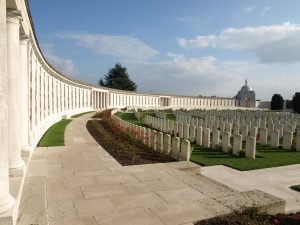

LAURIE WAITE
Sources
The National Archives
‘The Great War: Calne District Soldiers’ by Richard Broadhead
Commonwealth War Graves Commission
War Diaries of various regiments.
